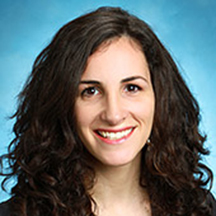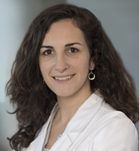

Brain Matters: Just Keep Moving!
by Melita Petrossian
Patients with Parkinson’s disease (PD), a brain condition that affects movement and balance and can cause tremor, often have the same worry: Is my mind going to be affected?
While most patients have normal cognition at the start of the condition, unfortunately various aspects of thinking can be affected as PD progresses.
The most powerful treatment we can recommend is physical exercise. Many people are surprised to hear that exercise can literally change the brain both physically and chemically.
Exercise releases brain-derived neural factor (BDNF), which supports and protects brain cells. It makes the brain cells use dopamine more efficiently (a key neurotransmitter which is reduced in PD patients), and it results in the formation of new synapses (connections) between brain cells.
Thus, exercise results in neuroplasticity, the brain’s way of healing itself in the face of a chronic condition. Clinically, exercise has been shown to improve global cognitive function, processing speed, sustained attention, and mental flexibility in PD patients.
So what activities should PD patients do?
Cardiovascular/aerobic fitness
With the guidance of their internist and/or cardiologist, 3-4 times per week, for 30-45 minutes per session.
- Treadmill, exercise bike, elliptical, swimming/water aerobics
Skill-based exercise
Exercise with a conscious and mindful awareness of the body requiring concentration while exercising. It may involve cognitive tasks while exercising, or doing something different with the upper body compared to lower body, or left body vs. right body.
- Tai Chi
- Boxing (e.g., Rock Steady Boxing or StoPD)
- Dance (e.g., tango/ballroom or Dancing through Parkinson’s)
- Dual tasking (Cognitive training simultaneous with motor training)
- Pilates
- Yoga
Social interaction / engagement
Avoid isolation and interact with friends and family. Creative endeavors such as singing, visual art, and dance, engage brain areas that are inhibited in our usual life.
In summary, just keep moving!
For more information, please contact the Pacific Movement Disorders Center at 310-582-7433 or go to our website to schedule a consultation.
Adapted from the original article published in the June 2019 issue of the Santa Monica Star.

Dr. Melita Petrossian is the Director of the Pacific Movement Disorders Center. As a specialized movement neurologist she cares for patients with Parkinson’s disease, essential tremor and cervical dystonia, as well as a wide range of other movement disorders.
About the Author

Melita Petrossian
Melita Petrossian, MD, is Director of Pacific Movement Disorders Center and is a fellowship-trained neurologist with clinical interests and expertise in movement disorders such as Parkinson’s disease, essential tremor, dystonia, gait disorders, ataxia, myoclonus, blepharospasm, hemifacial spasm, Meige syndrome, spasticity, tics, and Tourette’s syndrome. She also specializes in Parkinson’s-related conditions such as Dementia with Lewy Bodies, progressive supranuclear palsy, multiple system atrophy, corticobasal degeneration, primary freezing of gait, and Parkinson’s disease dementia.
Last updated: July 25th, 2019